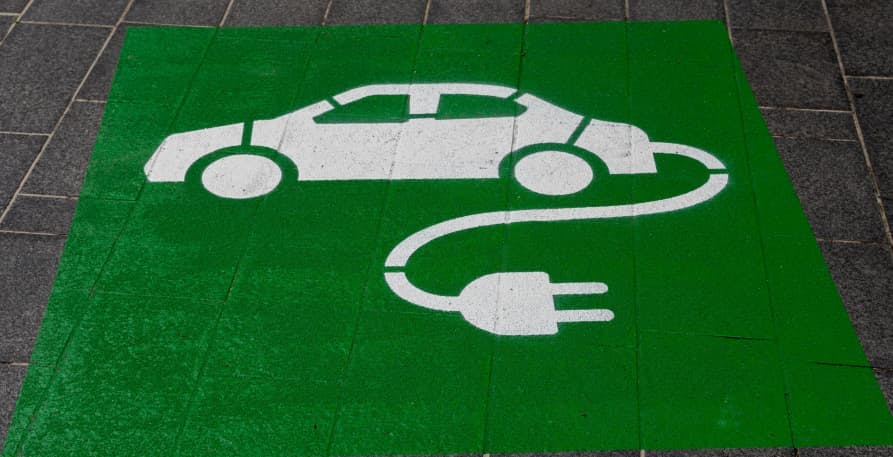
The UK’s Transport Decarbonisation Plan: Everything you need to know
In this article, we’ll unpack the key details of the UK’s Transport Decarbonisation Plan and what it means for the transport industry.
ESG / CSR
Industries



Don’t let vehicle emissions “drive you crazy"...
Even though vehicle emissions account for a significant share of the overall CO2 emissions in the US (one fifth), there are many ways to optimize transportation efficiency that go beyond the standard internal combustion engine to electric vehicle swap.
On the other hand, these swaps will become more common in the future. Many vehicle manufacturers have committed to transitioning new production to EV models within the next couple of decades.
👉 These include Jaguar, Audi, Volvo, Volkswagen, Mercede-Benz, Ford, Nissan, Honda, and others.
The growth of the EV sector is exciting, but lithium-ion batteries aren’t the only player on the field – as other technological advances like fuel-cell batteries, biogas, and smart cars can all move the vehicle industry forward.
In this article, we'll discuss how and why vehicle emissions are calculated, because measuring your carbon footprint is always the first step to reducing your environmental impact – such as with vehicle emissions.

Vehicle emissions are considered across the operational life-span of a vehicle. They include the following emissions calculations:
The variables to calculate vehicle emissions are subject to differ. For instance, car manufacturing may either depend on imported parts produced overseas versus locally. The imported parts obviously have a much higher shipping footprint.
Another way in which vehicle emissions may vary is due to the fact that internal combustion engines also have a lot more parts to manufacture and assemble than electric vehicles. This can make a difference in terms of the sum of resources used to manufacture each type of vehicle.
Lastly, vehicle emissions may vary as the production of car fuel can vary significantly depending on the fuel or electricity source used. For instance, EVs use electricity for their battery charge, but there will be significant differences between EVs that use electricity from coal vs renewable energy sources.
Emissions from the tailpipe are different depending on the fuel type (biodiesel or bioethanol vs petroleum). EVs (or electric vehicles), on the other hand, don’t produce these emissions.
The term “carbon footprint” is commonly used, but isn't always commonly understood. The phrase is a measurement of CO2 that is added to the atmosphere from a particular activity.
Carbon footprints can be calculated for individuals, businesses, industrial sectors, the life-cycle of a product, and many other activities. Transportation has received significant attention, because it is the sector with the single highest contribution to global warming in the US at 29%.
Transportation emissions have been on the rise over the past two decades (1990 to 2019), with transportation emissions having accelerated faster in absolute terms (by amount) than any other sector. In the UK, 83% of the total distance traveled by passengers in 2018 were by car, van, or taxi.
A wide variety of factors impact the CO2 emissions of vehicles. For instance, car size matters. While large SUVs or utility vehicles are popular in the US, lighter cars use less energy. Other factors like car manufacturer, miles traveled, and fuel type.
Here are some examples to show how carbon footprints for vehicles vary by car type.
The primary source of CO2 emissions from electric cars come from manufacturing the vehicle. Compared to other types of cars in operation, it remains as the number one choice for low vehicle emissions.
Argonne National Laboratory estimates show that EVs may have higher emissions from production, but the emissions reduction from battery charging greatly reduces the overall impact compared to a combustion engine vehicle for a 300-mile car.
Half of the emissions from EV car manufacturing come from producing the lithium-ion battery itself. Whenever a battery is replaced, the total emissions of the vehicle go down. As more renewable energy sources come online, battery charging emissions will also go down.
Electric vehicles (EVs) are expected to reach price parity with new internal combustion engine (ICE) vehicles by about 2025. However, this estimate only accounts for up-front costs. Over the lifetime of the vehicle, EVs are a far cheaper investment.
Investing in an EV is a good option to reduce GHG emissions. Business owners can scale this solution by swapping out entire vehicle fleets. Keep in mind that owning an EV also requires having access to an EV battery charger – something California is ready to provide in their movement to prevent the use of gasoline powered cars by 2035.
Hybrid cars combine ICE and EV technologies in one car. The electric motor is used for ignition and slower speeds, while the ICE can help a car maintain higher speeds for long-distance travel.
The combined engine model works well as a transitional vehicle.
As the main source of GHG emissions, petrol cars and diesel cars are the main source of transportation GHG emissions. They emit an average of 4.4 tons of CO2 emissions each year.
However, these aren’t the only GHG emissions found in car exhaust. The fumes also contain methane and nitrous oxide, though in smaller portions than CO2. Tracking these emissions is important, however, because they heat the atmosphere faster than CO2.

Americans use vehicles for all aspects of their lives: traveling to grocery stores for shopping, road-trip vacations, and commuting to work. The US is known for its vast road-based infrastructure, as its highways, suburbs, and traffic jams all reflect America’s dependence on vehicles.
Yet, all of this driving in gas-powered vehicles comes with an immense global warming cost. Cars and trucks emit a fifth (20%) of the total GHG emissions in the US. Globally, this represents a massive footprint, because the US is the second largest emitter of GHGs in the world.
👉 Vehicles also produce about ⅓ of the air pollution in the United States. They have a worse impact on human health than industrial smokestacks.
Road construction has a significant environmental toll as well. It requires significant natural resources, asphalt and concrete contain toxins which contaminates stormwater runoff, and roadways also fragment wildlife habitats.
Some of the ways that the EPA addresses these issues is by conducting emission vehicle tests and creating various standards such as the Corporate Average Fuel Economy (CAFE) Standards. CAFE, in conjunction with the National Highway Traffic Safety Administration (or the NHTSA) work together to create standards for automakers to ensure they strive to use a baseline level of fuel efficiency for all vehicles to be manufactured.
The majority of Americans (69%) “feel a personal sense of responsibility to help reduce global warming,” according to a Yale Climate Communications 2021 poll. Most Americans (67%) also believe it’s not too late to do something about climate change and 61% believe individuals can do something about it.
Americans have a huge opportunity to reduce their overall carbon footprint by reducing or optimizing their car usage. If EVs are not a viable solution, many other strategies are available.
Here are a few examples:
After all, changing our habits is a much less daunting challenge than the risk of climate change – which threatens Americans’ safety, health, and economic security.

While the American road-based infrastructure is slowly diversifying with more opportunities for cyclists, and rail-based transportation everyday – vehicles will likely dominate for decades to come. There are actually more car-based solutions than you may realize.
👉 Did you know that EVs aren’t the only type of car that reduces GHG emissions?
One of the problems with EVs is their high dependence on lithium, a scarce resource found in biodiverse regions. In addition, EV batteries are not powerful enough for use in most passenger airplanes, shipping, or manufacturing.
To address this issue, car manufacturers are researching new technologies which could lead to even more alternatives to fossil fuels in the future.
Hydrogen-powered cars are electric vehicles that use a hydrogen fuel cell rather than a lithium-ion battery. The technology produces energy from a well-known chemical reaction in which hydrogen contacts oxygen to produce water. When the chemical reaction occurs, heat and electricity is produced.
Unlike lithium-ion batteries, which are hard to recycle, hydrogen fuel cells don’t produce pollution or toxins. However, hydrogen is a very small and volatile element, so it is hard to work with.
Unfortunately the technology is still too expensive and experimental to scale up. However, this could soon change in the coming years as the technology develops.
Apart from petroleum-based fuels, a wide range of biofuels are being developed to minimize CO2 emissions. These are called “second generation” (2g) fuels, and they are produced using biomass, which can be obtained from sources as diverse as agriculture, forestry, and food waste.
The logic for biofuels is that even though they emit CO2 during combustion, they store CO2 during the growth of the biomass. They could therefore offset the emissions they produce. They are also biodegradable unlike petroleum products. The two main types include bioethanol and biodiesel.
However, a various studies question the offsetting potential of biofuels because they do not account for land-use based CO2 emissions caused by tilling, land conversion, and the use of nitrogen fertilizers.
Connected and autonomous vehicles could also make transportation more fuel-efficient by enabling vehicles to coordinate better. They have the potential to minimize stops at traffic lights, keep the flow of traffic moving, and share information on road conditions and obstacles across a network of vehicles.
Smart mobility solutions use sensors to collect and share information such as driving speed, location, and routes within a network, so cars can automatically optimize routes in real time, or adjust driving speeds to improve the overall flow of traffic.
However, research shows that autonomous vehicles are only more sustainable when the energy source from charging stations is not powered by fossil fuels.

Business owners can flex their influence when it comes to making employee commutes more sustainable. The first step is to consider the available alternatives, and then choose options that most employees would use and benefit from.
So far, there are no restrictions on personal car use from regulatory authorities limiting the amount a person can drive each year. This means individuals who care about sustainability would have to adjust their own habits to address the problem of CO2 emissions.
However, businesses are in a slightly different position. They have a greater responsibility to ensure that the requirements they place on employees are responsible for their overall CO2 impact. This matters not only to investors, but to the individual stakeholders such as employees that work in a company.
👉 Therefore, businesses can use their strong influence to encourage better vehicle travel options.
Here are a few ideas:
While roadtrips in the U.S. remain popular and the dream of a high speed rail network in the U.S. is still a pipedream, it’s one that has grown in popularity in Gen-Z social media memes. A 2013 map of a potential high speed rail network has younger generations wondering: why can’t we have this in the US?
High speed trains are available in countries across Europe and Asia and it’s growing in countries like Turkey, Saudi Arabia, and Uzbekistan. For these countries, rail travel is not only a practical and affordable solution for business trips, it also has a lower CO2 footprint than vehicle trips.
Businesses operating where efficient rail networks are available should prioritize rail-based business trips in place of car- or air-travel.
Vehicle fleet selection is no longer limited to vehicles operating on petroleum. Even for smaller warehouse vehicles like forklifts, alternatives exist. By purchasing EV or alternative vehicle fleets, your organization can demonstrate seriousness about the transition towards a net zero future.
👉 Proper maintenance of vehicles can also shave off unnecessary emissions. Routine replacements of air filters and using premium fuels helps eliminate emissions over time.
Ultimately, vehicle emissions will continue to be one of the greatest threats to climate change – as everyone makes use transportation in someway. However, businesses and the average person alike can make small efforts to how they get around in their day-to-day lives that could elicit big changes for the better.
If reading this article about vehicle emissions has made you interested in reducing your carbon emissions to further fight against climate change – Greenly can help you!
Trying to reduce your company's emissions, such as vehicle emissions, can be challenging, but don't worry – Greenly is here to help. Click here to schedule a demo to see how Greenly can help you find ways to reduce your vehicle emissions and fight against climate change.
Greenly can help you make an environmental change for the better, starting with a carbon footprint assessment to know how much carbon emissions your company produces.